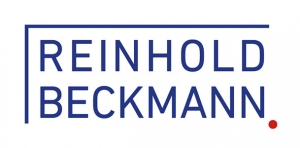In my seminars on copyright law I have come across this question again and again in the recent months. The occasion was the discussion about the new EU Copyright Directive, which was decided on in the summer of 2019 with a lot of excitement in public.
Keywords were upload – filter and direct liability of platform operators for copyright violations by their users.
The Main focus of the directive is the Europe-wide introduction of ancillary copyright for press publishers and the establishment of direct liability of the platform operators. Both are already applicable law in the FRG.
But what legal binding effect does an EU directive have?
It is important to know that an EU directive comes into being in the so-called TRILOG procedure at EU level, i.e. with the participation of the three institutions of the EU:
- The EU Council, i.e. the assembly of the heads of governments of the EU Member States. This also convenes at ministerial level. The EU Council is the political leadership of the EU and the principle of unanimity applies. This is also the reason why the EU cannot take any political decisions currently, because I almost no political question unanimity can be reached.
- The EU Parliament, which is larger than any national parliament and directly elected.
- The EU Commission as the administrative arm of the EU, which is basically responsible for ensuring uniform economic conditions in the EU and has been given extensive powers in this regard.
So how does the TRILOG procedure typically work?
The EU Council decides that in one area, e.g. data retention, it makes sense to install a uniform Europe-wide regulation. The Council then instructs the EU Commission to prepare a corresponding directive.
The EU Commission then develops the proposal for an EU directive with the participation and consultation of the associations and lobbyists concerned and then submits it to the EU Parliament for the first vote.
In the EU Parliament, this blueprint is then supplemented, amended and expanded and, after the conclusion of the parliamentary discussion, is put to the first vote.
This version is then submitted to the EU Council for final examination. The Council can make deletions and amendments and must then vote again.
The version modified in this way is then put back to the EU Parliament for the 2nd vote. The EU Parliament must then vote, without being able to change the content of the directive in any way.
If this vote is positive, then it is finally there the final EU directive!
What does that mean for us now?
According to the EU Agreements, this directive is now not directly applicable in the Member States as binding law, but merely triggers the obligation of the Member States to incorporate this directive into their respective national law.
This means that each state must now start its national legislative procedure and incorporate the directive into its national law, e.g. the Copyright Act. Unfortunately, there is no guarantee that this will actually be implemented! The EU can only impose penalties if a state does not implement the directive within a period of 3 – 5 years.
No EU head of state risks political problems “at home” just to implement an EU directive. It should not surprise us that especially the FRG does not implement all EU – directives into national law!
So, in the result you have to state that an EU – directive will never be directly legally binding for a citizen of a member state!


